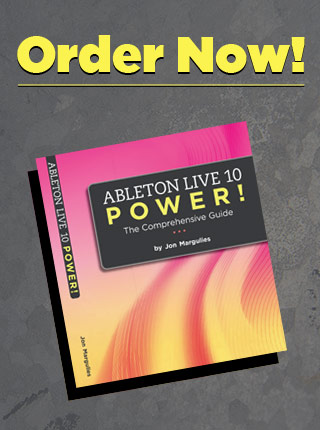Over the last few tips, I’ve been breaking down every element of my performance template that hasn’t come up in previous tips. When I’m all done, we’ll spend a little time looking at how it’s all put together.
If you’ve been following along, something you’ll know about my set is that I’m regularly mashing a vocal or some sort of sample against another track that contains the main beat. Because I work with a wide variety of source material, from many different eras of recording technology, it’s difficult to get the volume right when mixing these samples in during a show – or at least, it used to be.
Sure, I would try to get volumes equalized in advance by using the clip volume slider…
…but this often didn’t do the trick. With some samples, turning it up gave me with crazy loud peaks, but not enough overall loudness to cut through on the gig.
To get a sample to sit properly on top of a fully mixed track, you sometimes need to increase it’s average loudness (RMS), rather than just turning it up. This is typically done with compression/limiting. However, just dropping a compressor into your samples track has big problems as well – for the material I work with, there’s no single compressor setting that works for everything.
Enter the HoboBus!
In the example above, the dance track (5-Tracks) is being routed to the Master, while the sample (6 -Hobos) )is being routed to an audio track called HoboBus.
All the compression takes place in the HoboBus track. This offers a huge advantage: as the volume of the sample track is turned up, it drives the compressor harder increasing the overall loudness. This provides me with an easy way to adjust the compression on the fly to get everything to sit properly – without worrying about the crazy peaks I used to sometimes have trouble controlling.
There’s a few more technical details that we’ll take a look at in the next tip.





